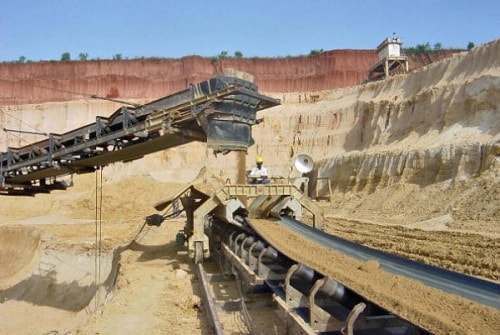The Bureau of Land Management on Monday gave its final approval for a 2.4-mile-long open pit phosphate mine in Caribou County. However, an appeal filed on the same day is stopping the work from moving forward at least for now.
The Canadian company Agrium proposed the Rasmussen Valley Mine 18 miles northeast of Soda Springs to replace the existing North Rasmussen Ridge Mine, which will be mined out later this year.
Agrium turns phosphate ore into fertilizer used by farmers, and company officials say all of their production is generally sold in the U.S.
The new mine would be located primarily on federal land managed by the U.S. Forest Service and BLM, according to an Agrium news release, and both agencies have now given their OK.
“With approval of the Rasmussen Valley Mine, Agrium will continue to provide 500 well-paying jobs in SE Idaho, including $50 million in direct wages and benefits,” according to the news release. “Idaho will continue to benefit from $260 million in economic impact, including millions of dollars paid in State and local taxes.”
Company officials say the project has involved thorough environmental assessments, community engagement and years of research.
“The result is an innovative and collaborative mine plan that we are proud of, and that will provide the ore we need to supply local agriculture,” said Mike Dirham, Agrium’s vice president of potash and phosphate. “By the end of the project, the area will look much the same as it did before we began.”
But the Yellowstone to Uintas Connection (Y2U), which describes itself as a nonprofit organization working to protect the integrity and habitat quality of the wildlife corridor connecting the Great Yellowstone Ecosystem to the Uinta Mountains and Southern Rockies, questions the thoroughness and legality of the Environmental Impact Statement (EIS) and Record of Decision (ROD).
“The agencies have taken a mine-centric approach and failed to analyze cumulative impacts from past, present and future activities including mining, roads, OHVs and human traffic and other factors fragmenting and degrading habitat, polluting soils and waters in the SE Idaho Phosphate Mining Region, which is part of the Regionally Significant Wildlife Corridor connecting the Greater Yellowstone Ecosystem to the Uinta Mountains and Southern Rockies,” according to the organization’s appeal.
Y2U is seeking a stay in the matter and is requesting that the EIS and ROD be withdrawn. It’s also asking for the imposition of a remedy for interim management until BLM addresses the deficiencies it believes exists.
Jeff Cundick, minerals branch chief for the BLM’s Pocatello Field Office, said an EIS assessing potential impacts of the mine was released to the public in September, and they subsequently received comments from government and non-government agencies and organizations, the Shoshone-Bannock Tribes and various citizens.
Cundick said some comments involved concerns about environmental impacts, while others expressed support for jobs and economic benefits.
“These comments were carefully considered by BLM prior to making a decision to approve a mining plan that included measures to reduce environmental impacts and ensure compliance with established requirements from mining activities,” he said.
Cundick noted that BLM is reviewing Y2U’s appeal with the Department of the Interior’s (DOI) Solicitor’s Office.







